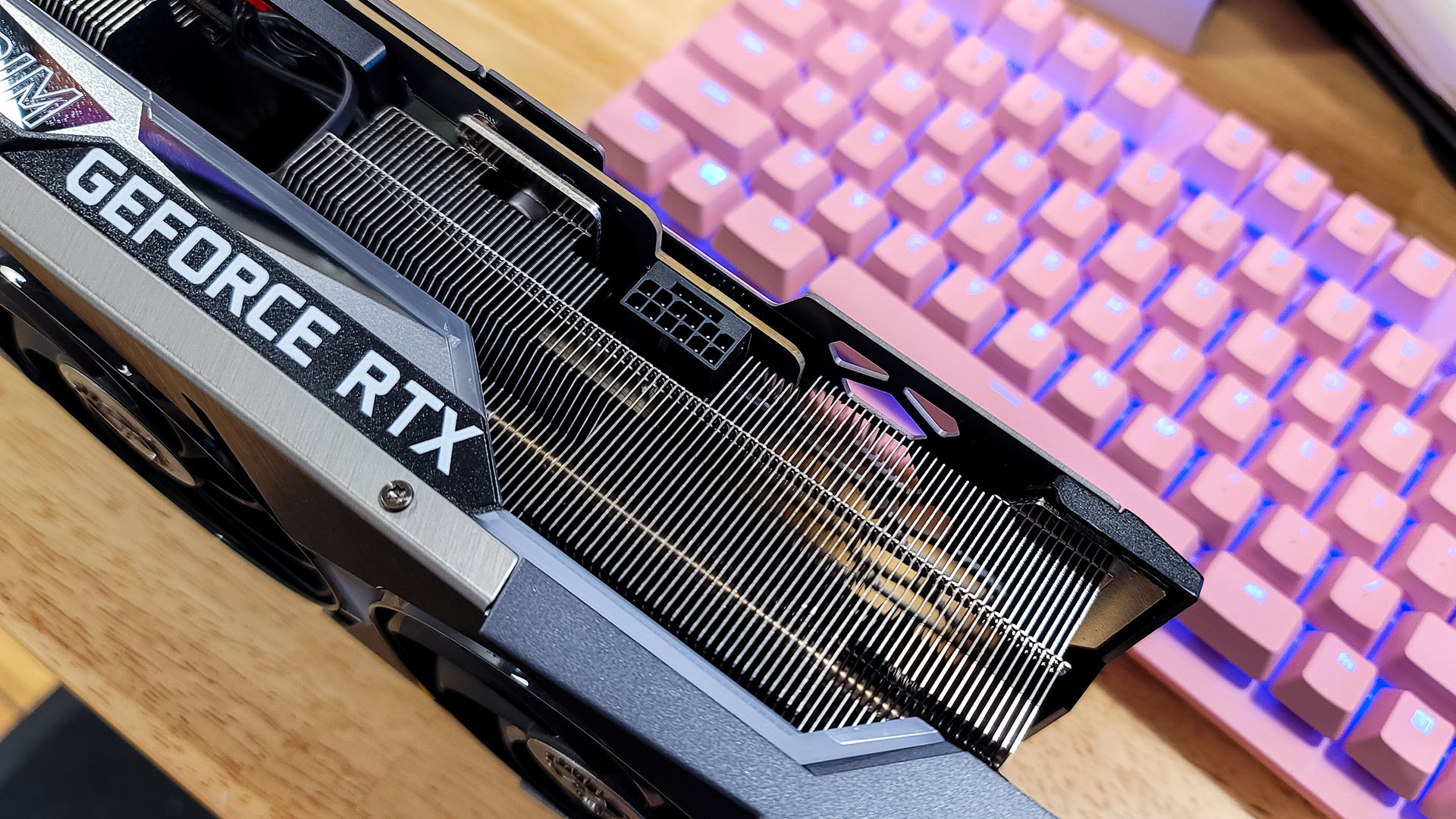Graphics card prices have sunk again, albeit by a more modest amount in the case of retail price tags, with the bigger drops still being witnessed in the second-hand market.
This is going by the latest figures from Tom’s Hardware (opens in new tab), our sister site which scouts retail and eBay pricing on a regular basis.
Current-gen GPU prices (Nvidia RTX 3000 and AMD RX 6000) at retailers have dropped 3% over the course of the month of July, which may not sound like all that much, but it continues a well-established downward trend at this point; a slow but consistent erosion of price tags that have been way higher than the recommended levels (MSRP) in the past.
There are a number of graphics cards which are now below MSRP, and although more of those are AMD GPUs, there are some from Nvidia too – most notably the RTX 3090 Ti, which is 17% less than its MSRP as measured by Tom’s Hardware. The RTX 3080 Ti is 10% less, too, and the RTX 3090 is 3% under MSRP, so it’s the high-end models which are dipping in this way.
Other Nvidia GPUs still remain around 15% or so over MSRP, and in the case of the RTX 3050, a whopping 31% over.
In contrast, the vast majority of current-gen AMD graphics cards are now under MSRP, and some by a good chunk, like the RX 6900 XT at 15% below, or the RX 6600 at 17% less.
Only AMD’s Radeon RX 6800 and 6800 XT remain above MSRP, in fact, and not by much at 3% and 6% over respectively.
Much more sizeable falls have been witnessed for GPUs sold on eBay which dropped by 14% on average compared to June 1. Second-hand models of generations previous to the current RTX 3000 and RX 6000 cards fell even further, by 17% on average in fact.
Tom’s notes that the overall GPU price drop since the start of 2022 is 57% on average, showing just how far price tags have come down in the first half of this year.
Analysis: Steer clear of GPU minefield and play a waiting game
We should at this point repeat our warnings on the subject of those used GPUs being flogged off on auction sites. While those beefy price drops may make second-hand graphics cards look very tempting – the high-end models in particular – do bear in mind that a good deal of these used cards now flooding the likes of eBay will be ex-miners getting rid of their hardware following the recent crypto crash.
The problem with such GPUs is that they’ll likely have been run ragged 24/7 for a substantial period of time, and that does not bode well for their prospects in terms of longer-term longevity. It’s the equivalent of buying a used car with a ton of miles on the clock (which has been driven hard) – the likelihood of something going wrong is uncomfortably high.
Don’t forget that miners know their used GPUs aren’t an attractive proposition for these reasons, so may claim that the graphics card being sold was used in a normal PC in order to sway buyers (or even outright lie and claim the GPU is actually new, not used). Be very wary of anything that looks too good, or too keenly priced, to be true…
In fact, due to that mining stock being cleared, buying a used GPU is rather a (literal) minefield right now, and we’d suggest steering clear of the market entirely, at least for the time being.
The best bet for us is to wait right now, and watch new graphics cards at retail, with the expectation that the pressures of next-gen GPU launches coming closer will further depress pricing.
If the rumor mill is right, we could see some big drops in retail prices for Nvidia, which as noted above, has been more stubbornly resisting the downward price movement than AMD (mainly due to demand for RTX 3000 graphics cards). Word is, however, that this situation won’t hold, as Team Green supposedly has an ‘enormous’ amount of stock of current-gen GPUs to clear through before the launch of RTX 4000 cards, which is coming rapidly (maybe in just a couple of months).
So much so, that the theory is Nvidia wants to cut production orders for next-gen graphics cards and delay shipments somewhat, and given that, we can expect some bigger price cuts to be forced into play, as retailers look to clear said inventory build-up of RTX 3000 models – while would-be buyers become more cautious and willing to wait for RTX 4000 GPUs, in the knowledge that they’re coming closer and closer.
That’s why the smart money, for us anyway, is on waiting particularly for Nvidia’s pricing to drop further – and this is before we even take into account the further disruptive factor for the GPU market of Intel finally launching its desktop Arc Alchemist graphics cards.
While the buzz around Arc GPUs has been worryingly flat of late, with question marks around performance (and drivers in particular), Intel could decide to attack on the pricing front – and has the potential to deliver some potent competition particularly at the lower-end of the market – thereby providing another source of pressure for more GPU price drops from AMD and Nvidia as a response.





